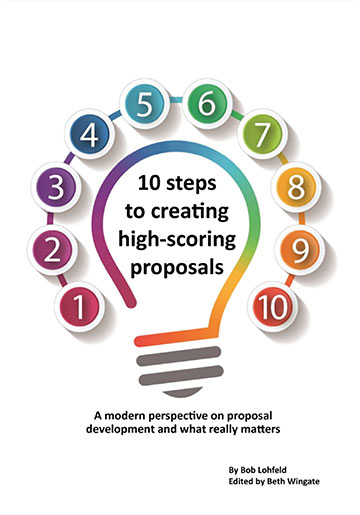The Ultimate Guide to Innovative Other Transaction Authority (OTA)

In the world of government contracting, speed often clashes with red tape. Enter the Other Transaction Authority (OTA). Imagine a system where fresh ideas meet swift action and new startups and tech leaders join forces with defense and security teams without the usual contractual headaches—this is the future of government partnerships. Whether you are new to OTAs or eager to learn more, prepare to discover how these tools are transforming the landscape of innovation.
History of OTAs
In 1958, during the U.S.-Soviet space race, NASA was struggling with slow contracting processes, which hindered rapid technological advancements. To overcome this, Congress gave NASA Other Transaction Authority, enabling it to bypass typical government contracts, grants, and agreements. This flexibility contributed to the U.S. reaching the moon first.
Though OTAs are binding legal agreements, they are not governed by the Federal Acquisition Regulation (FAR) and cannot be protested. There are three types of OTAs:
- Research OTAs
Purpose: Support research and development of innovative technologies.
Use Cases: Facilitates collaboration with businesses, universities, and research institutions to conduct research that can lead to technological innovations. - Prototype OTAs
Purpose: Develop and test new technology prototypes.
Use Cases: Fill specific capability gaps or operational needs, possibly leading to production if the prototype proves successful.
- Production OTAs
Purpose: Move successfully tested prototypes into production.
Use Cases: Enable quick transition to full-scale production, expediting the use of new technologies.
Each type of OTA enables government agencies to swiftly partner with industries, universities, and non-profits, promoting rapid innovation and technological advancement.
Nontraditional Contractors
OTAs provide a path for nontraditional contractors to participate in technological and innovative efforts that might otherwise be unavailable to them. An entity qualifies as a nontraditional contractor if any of the following apply:
- The entity has not performed any contracts subject to full Cost Accounting Standards (CAS) for at least one year.
- The entity exclusively performs commercial contracts.
- The entity exclusively performs under firm fixed price (FFP) contracts with price competition.
The good news for small businesses is that most qualify as a non-traditional contractor.
Consortiums
Consortiums are groups of independent entities, such as companies, organizations, institutions, or governments, that collaborate on specific projects or objectives. They work with OTAs—both promoting flexibility, innovation, and collaboration. Operating under an OTA allows consortiums to engage efficiently with government agencies, avoiding traditional procurement complexities. This streamlines the development and implementation of advanced technologies or solutions.
How OTAs Work
OTAs are much simpler than traditional contracting. The process involves the following steps, which can vary depending on the agency and project requirements:
- Identification of Need – The government identifies a capability gap or need, often for research, development, or prototyping, requiring innovative solutions beyond traditional procurement capabilities.
- Identification of NeedAnnouncement and Solicitation – The government issues a solicitation, often in the form of a Broad Agency Announcement (BAA) or similar notice, inviting proposals from industry, universities, and consortiums.
- Submission – Interested parties submit proposals based on the government’s needs, evaluated on criteria like innovation, feasibility, and success potential.
- Negotiation and Agreement – OTAs permit flexible negotiations, unlike traditional contracts governed by the Federal Acquisition Regulation (FAR). This ensures agreements meet the participants’ and the government’s needs, outlining scope, timelines, and deliverables.
- Project Execution – Upon agreement, the consortium and government collaborate on utilizing combined resources. The OTA framework offers flexibility to adapt to the latest information and evolving requirements throughout the projects.
How Does an OTA Help the Government?
Here are some key aspects of OTAs:
- Flexibility: OTAs let agencies customize agreements to meet specific project needs free from standard contract regulations.
- Innovation: Engaging with nontraditional vendors like startups and tech companies, OTAs foster innovative solutions and technologies.
- Speed: The streamlined process of OTAs allows for quick project initiation and execution, making them suitable for urgent projects.
- Reduced Bureaucracy: OTAs reduce administrative burdens, enabling participants to focus on project outcomes rather than procedural compliance.
- Collaboration: OTAs encourage closer collaboration between government and industry, utilizing creative methods to tackle complex challenges.
Conclusion
In summary, Other Transaction Authorities (OTAs) revolutionize government procurement by providing flexible, tailored agreements that invite innovative solutions from nontraditional vendors. They reduce bureaucratic hurdles, enabling quicker project execution and fostering dynamic collaboration between government and industry. OTAs equip government entities to adapt swiftly to technological advances, driving progress in key research and development areas. Lohfeld Consulting’s capture and proposal professionals are experienced in OTAs and are here to help you through the process. Contact us today to learn more about our services.
Relevant Information
By Dana Katalinas, Vice President, APMP Member, GPA Member
Lohfeld Consulting Group has proven results specializing in helping companies create winning captures and proposals. As the premier capture and proposal services consulting firm focused exclusively on government markets, we provide expert assistance to government contractors in Capture Planning and Strategy, Proposal Management and Writing, Capture and Proposal Process and Infrastructure, and Training. In the last 3 years, we’ve supported over 550 proposals winning more than $170B for our clients—including the Top 10 government contractors. Lohfeld Consulting Group is your “go-to” capture and proposal source! Start winning by contacting us at www.lohfeldconsulting.com and join us on LinkedIn, Facebook, and YouTube(TM).
Paperback or Kindle
10 steps to creating high-scoring proposals
by Bob Lohfeld
contributors Edited by Beth Wingate
Subscribe to our free ebrief
Teaming friends, frenemies, and enemies—12 tips to mitigate harmful effects
Did you know that contracting officers spend up to 20% of their time mitigating disputes between teaming partners? In an informal poll we conducted on LinkedIn last month, 40% of respondents classified their teaming partners as “frenemies” on their last bid.
Explore Further
- Advice (539)
- AI (28)
- APMP (18)
- Army MAPS Contracts (3)
- Business Development (294)
- Capture Management (266)
- Complex Technology Grants Services (26)
- Favorite Books (5)
- GenAI (4)
- Go-to-Market (27)
- Graphics (5)
- Lohfeld Books (2)
- NASA SEWP VI Contracts (2)
- Navy SeaPort-NxG Contracts (2)
- NIST MSE Grants (1)
- NIST NAPMP Grants (2)
- Past Performance (63)
- Post-submission Phase (14)
- Pre-RFP Preparation (264)
- Proposal Management (339)
- Proposal Production (75)
- Proposal Reviews (38)
- Proposal Writing (107)
- Pursuit Phase (108)
- Research Report (4)
- Resources (63)
- Tools & Tips (421)
- Training (13)
- Uncategorized (223)

Sign Up for INSIGHTS and Download your FREE book
We'd love to help you with your proposals. Enjoy our complimentary Lohfeld Consulting Group Capture & Proposal Insights & Tips book with your FREE subscription to our Insights Newsletter.
GET YOUR FREE BOOK


